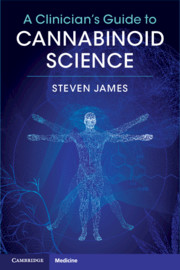Book contents
- A Clinician’s Guide to Cannabinoid Science
- Reviews
- A Clinician’s Guide to Cannabinoid Science
- Copyright page
- Dedication
- Contents
- Preface
- Section 1 An Introduction to Cannabinoid Science
- Chapter 1 An Introduction to the Botany and History of Cannabinoids
- Chapter 2 Δ9-Tetrahydrocannabinol (THC) and Cannabidiol (CBD)
- Chapter 3 The Endocannabinoids
- Chapter 4 Approved Cannabinoid Medicines for Therapeutic Use
- Chapter 5 The Safety of Phytocannabinoids and Cannabinoids in Clinical Practice
- Section 2 Potential Therapeutic Uses of Cannabinoids in Clinical Practice
- Index
- References
Chapter 4 - Approved Cannabinoid Medicines for Therapeutic Use
from Section 1 - An Introduction to Cannabinoid Science
Published online by Cambridge University Press: 12 October 2020
- A Clinician’s Guide to Cannabinoid Science
- Reviews
- A Clinician’s Guide to Cannabinoid Science
- Copyright page
- Dedication
- Contents
- Preface
- Section 1 An Introduction to Cannabinoid Science
- Chapter 1 An Introduction to the Botany and History of Cannabinoids
- Chapter 2 Δ9-Tetrahydrocannabinol (THC) and Cannabidiol (CBD)
- Chapter 3 The Endocannabinoids
- Chapter 4 Approved Cannabinoid Medicines for Therapeutic Use
- Chapter 5 The Safety of Phytocannabinoids and Cannabinoids in Clinical Practice
- Section 2 Potential Therapeutic Uses of Cannabinoids in Clinical Practice
- Index
- References
Summary
The nineteenth and twentieth centuries witnessed advances in the ability to separate many biologically active molecules from plants and gave birth to the modern pharmaceutical industry. Even with today’s current scientific advances with biotechnology and genomics, in the twenty-first century botanical extracts from plants continue to provide significant numbers of effective medicines. Cannabis, used for thousands of years, lagged behind this development, as described in Chapter 1, and only in 1985 were the first cannabinoid-based medicines approved.
- Type
- Chapter
- Information
- A Clinician's Guide to Cannabinoid Science , pp. 41 - 54Publisher: Cambridge University PressPrint publication year: 2020



